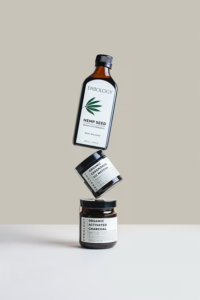Polaroid 600 film is an instant film that gained popularity in the 1980s and 1990s. Produced by Polaroid Corporation, this film was designed for use in Polaroid 600 series cameras. It allowed photographers to take pictures and have them developed within minutes, offering a unique and immediate way to capture memories. While digital photography has largely replaced instant film, Polaroid 600 film retains a nostalgic and artistic appeal for those who appreciate its retro charm and tangible results.

What Does Polaroid 600 Film Mean?
Polaroid 600 film is a specific type of instant film produced by Polaroid Corporation for use in Polaroid 600 series cameras. This film allowed photographers to capture and develop images within minutes, providing an instant and tangible result. “600” denotes the camera series designed to work with this film. Polaroid 600 film was widely used in the 1980s and 1990s, offering a unique way to create instant photographs before the digital age. Today, it holds nostalgic and artistic value for those who appreciate its retro and hands-on approach to photography.
How to Take Photos with Polaroid 600 Film?
Taking photos with Polaroid 600 film involves a straightforward process, but properly handling the film and camera is important to achieve the best results. Here’s a step-by-step guide

Load the Film
Open the camera’s film door and load a pack of Polaroid 600 film into the chamber. Ensure the film is placed correctly, following the instructions provided with the film pack.
Power On
Turn on the camera by pressing the power button or sliding the power switch, depending on your camera model. Wait a moment for the camera to initialize.
Compose the Shot
Look through the camera’s viewfinder or use the LCD screen to compose your shot. Pay attention to framing, focus, and composition like any other camera.
Set the flash (if needed)
Many Polaroid 600 cameras have a built-in flash. Consider using the flash if you’re shooting in low light or indoors. Some cameras have manual flash control, while others have automatic flash that activates when needed.
Adjust the Exposure Control (if available)
Some Polaroid 600 cameras offer exposure control settings. Adjust these settings based on the lighting conditions and your creative preferences.
Press the Shutter Button
Press the shutter button to capture the photo. The camera will eject a blank film sheet and then pull it back into the camera.
Wait for Development
After taking the shot, be patient. Polaroid film takes a few minutes to develop. Keep the photo shielded from direct sunlight during this time, as excessive light exposure can affect the image.
Peel Apart the Image
Once the development time has passed (usually a few minutes), gently peel apart the photo from the film. Hold it by the edges to avoid smudging the image.
Protect the Image
The image is sensitive to light, so shield it from direct sunlight as it develops. It may take up to 30 minutes for the image to fully stabilize.
Enjoy Your Instant Photo
Your Polaroid 600 photo is now ready! You’ll have a physical, one-of-a-kind instant print in your hands.
How To Insert A Film – Tutorial: How To Use A Polaroid 600 Camera
Does Polaroid 600 Need Ink?
No, Polaroid 600 film does not require ink. Polaroid instant film uses a chemical process to develop and create the image on the film sheet. When you take a photo with a Polaroid 600 camera, the film contains all the necessary chemicals and layers to create the final image. After you take a shot, the camera’s internal rollers spread a developing chemical over the film, which then reacts to create the photograph. This chemical reaction doesn’t involve using ink or any external supplies; everything needed for the image is contained within the film.
How Long Does Polaroid 600 Film Last?
The longevity of Polaroid 600 film depends on several factors, including how it’s stored and the conditions it’s exposed to. When properly stored in a cool, dry place and protected from extreme temperatures, humidity, and light, Polaroid 600 film can last for several years. However, it’s important to note that the film’s chemical components will degrade over time, and the quality of the images may deteriorate. The color and contrast may change, and the photos may develop a “vintage” or aged look. The exact shelf life can vary from film pack to film pack. To maximize the lifespan of your Polaroid 600 film, store it in a cool, dark place, away from direct sunlight and temperature extremes. If you have old film packs, testing a few shots to see how the images turn out before using the film for important or irreplaceable moments is a good idea.
Does Polaroid 600 Film Have a Battery?
Yes, Polaroid 600 film packs include a built-in battery that powers the camera’s motor and flash (if the camera has one). This battery is essential for properly operating the Polaroid camera, as it drives the film ejection, development, and other mechanical functions.
Loading a new pack of Polaroid 600 film into the camera contains the film sheets and the necessary battery to operate the camera. The battery lasts for the entire film pack, typically allowing you to take multiple shots. Once you’ve used all the film in the pack, discard it, as the battery cannot be replaced or reused.
How Many Pictures Does a Polaroid 600 Film Take?
A standard pack of Polaroid 600 film typically contains eight exposures or photos. This means you can take eight instant photos with one pack of film. It’s important to keep track of the number of exposures you’ve used, as once you’ve taken eight photos, you’ll need to replace the film pack in your Polaroid camera.
Why is Polaroid Film So Expensive?
Polaroid film can be relatively expensive for several reasons:
Production Costs
The production of instant film involves complex chemical processes and specialized materials. Producing film that is reliable and of high quality can be costly.
Limited Availability
Polaroid discontinued instant film production in the mid-2000s, creating a scarcity of new, original film stock. As a result, the film that is still available today is often considered a limited and niche product, which can drive up prices.
Niche Market
The demand for Polaroid film is driven by a niche market of enthusiasts, artists, and collectors who appreciate instant photography’s unique and tangible qualities. This limited demand can lead to higher prices.
R&D Costs
Companies that have taken up the task of reviving instant film production, such as The Impossible Project (now known as Polaroid Originals), have had to invest in research and development to recreate the chemistry and technology of instant film, which can be expensive.
Packaging and Marketing
Packaging and marketing Polaroid film as a specialty product can also add to its overall cost.
Import Duties and Taxes
Depending on your location, import duties and taxes can significantly increase the price of Polaroid film.
While Polaroid film may be more expensive than traditional digital or 35mm film, many photographers and artists are willing to pay the premium for its unique and immediate results and nostalgic and creative appeal.
Do Polaroid Pictures Last?
Polaroid pictures can have a reasonably long lifespan when properly stored and protected. However, their longevity is not indefinite, and several factors can affect how long Polaroid photos last:
Storage Conditions
The way you store Polaroid pictures is crucial. Keeping them in a cool, dry, and dark environment, away from direct sunlight, heat, and humidity, can help prolong their lifespan.
Chemical Degradation
Over time, the chemicals within the instant film may degrade, leading to changes in color, contrast, and overall image quality. This degradation process can give the photos a vintage or aged appearance.
Physical Damage
Polaroid pictures are susceptible to physical damage, such as creases, tears, or bending, affecting their lifespan and appearance.
Handling
Handling Polaroid photos carefully and avoiding excessively touching the image surface can help preserve them.
Protection
Placing Polaroid photos in sleeves or frames or storing them in photo albums designed for protection can shield them from environmental factors.
Display
If you choose to display your Polaroid photos, consider using UV-filtering glass or acrylic in frames to protect them from fading due to UV light exposure.
How to Put the Film into a Vintage Polaroid 600 Camera?
To load film into a vintage Polaroid 600 camera, follow these general steps:
Open the Camera
Locate and release the film door latch to open the camera’s film compartment.
Check the Film Compatibility
Ensure you have the correct type of Polaroid 600 film pack compatible with your camera model. Check the film pack’s expiration date to ensure it’s still usable.
Insert the Film Pack
Insert the film pack into the camera’s film compartment, aligning it with the designated markers or guides inside the camera. Ensure the film’s dark slide (a black protective sheet) faces outward.
Close the Film Door
Gently close it until it clicks securely. Be careful not to press too hard, as it can damage the film pack.
Power On the Camera
Turn on the camera by sliding the power switch or pressing the power button. The camera is now ready to take photos.
Take a Test Shot
After loading the film, it’s good practice to take a test shot by pressing the shutter button to eject the first dark slide. This ensures that the film is advancing correctly.
Start Taking Photos
You can take photos once the test shot is ejected. Compose your shot, adjust camera settings (if available), and press the shutter button to take a picture. The film will eject, and the development process will begin.
Wait for Development
After taking a photo, the film fully develops. The development time varies depending on the film type, temperature, and other factors.
Retrieve and Protect Your Photo
Once the image is fully developed (usually a few minutes), gently peel apart the photo from the film and protect it from direct sunlight as it stabilizes.
Instant Film Friday! #5: How to put film into a vintage Polaroid 600 Camera!
How to Open and Close a Polaroid 600 Camera?
Opening the Polaroid 600 Camera
- Locate the Latch: On most Polaroid 600 cameras, you’ll find a latch or catch mechanism on the side or bottom of the camera.
- Release the Latch: Gently slide or press the latch to release it. This action should unlock the camera’s film door.
- Open the Film Door: The door should easily swing open with the latch released. Be careful not to force it; it may damage the door or the film inside.
Closing the Polaroid 600 Camera
- Align the Film Door: Ensure the film door is aligned properly with the camera body.
- Close the Film Door: Gently push the door until it clicks securely. Make sure it’s closed firmly, but avoid using excessive force.
- Lock the Latch: Once the film door is closed, slide or press the latch back into place to lock the door. This secures the film inside the camera.
Polaroid 600 How To – Camera Guide
Polaroid OneStep CloseUp 600 Instant Camera Tutorial | Forward Film Camera and Vintage Channel
Polaroid 600 vs SX-70 Color Film Showdown
The showdown between Polaroid 600 and SX-70 color film comes down to your camera type and preference for image quality and aesthetics.
Polaroid 600 film is designed for use in Polaroid 600 series cameras, known for their simplicity and ease of use. The film produces vibrant and saturated colors, making it well-suited for casual instant photography. However, it may not offer the same artistic control and nuanced results as the SX-70 film.
SX-70 color film, on the other hand, is designed for use in vintage SX-70 cameras, which enthusiasts and artists prize for their manual focus and creative potential. The film produces softer, dreamy images with a distinctly vintage look. It’s favored by those who appreciate its artistic and nostalgic qualities.
Ultimately, the choice between the two films depends on your camera and the style of photography you prefer. Polaroid 600 film is great for straightforward instant photos, while SX-70 film allows for more creative and artistic expression, albeit with a vintage aesthetic.
Polaroid 600 vs SX-70 Color Film Showdown – Which is the right film for you?
How Much Does Polaroid 600 Cost?
The cost of Polaroid 600 film packs can vary depending on the brand, type of film, and where you purchase it. A pack of eight exposures of Polaroid 600 film typically ranged from $15 to $25. However, prices can fluctuate, and costs may vary based on location and availability.
It’s a good idea to check with reputable camera supply stores, photography retailers, or online marketplaces for the most up-to-date pricing information. Remember that Polaroid film is considered a specialty product, and its cost may be higher than standard 35mm film or digital photography.
How to Get the Most of Polaroid Film?
To get the most out of your Polaroid 600 instant camera and film, consider these tips:
Practice
Familiarize yourself with the camera’s controls and settings. Take some test shots to understand how different factors, such as lighting and distance, affect the results.
Check the Film
Ensure your Polaroid 600 film has not expired and has been stored properly to maintain its quality.
Use Good Lighting
Instant film thrives in well-lit conditions. Shoot in natural light or well-lit environments for the best results.
Compose Carefully
Respond to composition, framing, and subject placement to capture the best possible image.
Focus
If your camera allows manual focus, use it to achieve sharp, well-focused shots.
Consider the Flash
Use the camera’s built-in flash or an external flash attachment to ensure proper exposure in low-light conditions.
Experiment
Instant photography is known for its unpredictability and unique results. Don’t be afraid to experiment with exposure, color, and creative techniques to achieve different effects.
Protect the Photos
Once your photo has developed, shield it from direct sunlight while stabilizing. Store your instant photos in a photo album or protective sleeves to prevent damage.
Mind the Temperature
Extreme temperatures can affect development and image quality. Avoid exposing the film to very hot or very cold conditions.
Clean the Rollers
Over time, the rollers in the camera can accumulate residue from the film. Periodically clean them to ensure even development.
Read the Manual
Consult the camera for specific instructions and recommendations, as different Polaroid 600 camera models may have unique features and settings.
Enjoy the Process
Part of the charm of Polaroid 600 photography is the tactile and immediate nature of the medium. Embrace the unexpected and appreciate each unique photo.
Videos
Polaroid Film Types Explained – Understanding the differences between i-Type, 600, SX-70, Go, & 8×10
Polaroid Originals 600 Color Film Review
















